-
 bitcoin
bitcoin $111743.690167 USD
0.54% -
 ethereum
ethereum $3950.699791 USD
0.55% -
 tether
tether $1.000164 USD
-0.01% -
 xrp
xrp $2.611685 USD
2.58% -
 bnb
bnb $1122.616845 USD
1.30% -
 solana
solana $193.462394 USD
-0.26% -
 usd-coin
usd-coin $0.999872 USD
-0.03% -
 dogecoin
dogecoin $0.196092 USD
-1.61% -
 tron
tron $0.296693 USD
-0.41% -
 cardano
cardano $0.652995 USD
-0.60% -
 hyperliquid
hyperliquid $44.316120 USD
12.98% -
 chainlink
chainlink $17.906269 USD
0.05% -
 ethena-usde
ethena-usde $0.999193 USD
-0.02% -
 stellar
stellar $0.326600 USD
1.70% -
 bitcoin-cash
bitcoin-cash $513.235984 USD
1.57%
How do you identify overbought conditions using BOLL?
Bollinger Bands help crypto traders spot overbought conditions when price touches the upper band, especially during volatility squeezes or with %B above 1, signaling potential reversals.
Oct 18, 2025 at 09:54 am
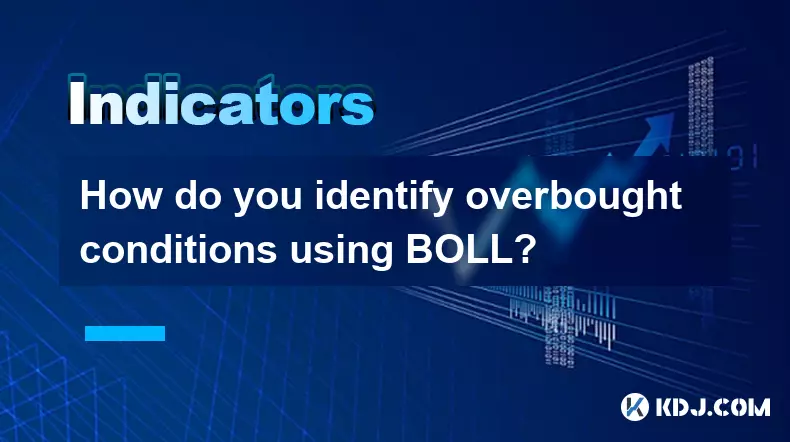
Understanding Bollinger Bands in Crypto Trading
1. Bollinger Bands consist of three lines: the middle band, typically a 20-day simple moving average; the upper band, which is two standard deviations above the middle band; and the lower band, two standard deviations below. These bands dynamically expand and contract based on market volatility, making them highly responsive to price movements in the cryptocurrency markets.
2. In periods of high volatility, the bands widen, signaling increased price fluctuations. During low volatility, they contract, often preceding sharp price moves. Traders rely on these visual cues to anticipate potential reversals or continuations, especially in fast-moving digital asset markets where sentiment shifts rapidly.
3. The placement of price relative to the bands provides insight into momentum and potential exhaustion. When prices consistently touch or exceed the upper band, it suggests strong upward pressure. However, repeated touches can also indicate that the rally may be overextended, prompting traders to look for signs of reversal.
Price Touching or Breaking Above the Upper Band
1. A common signal for overbought conditions occurs when the price of a cryptocurrency reaches or surpasses the upper Bollinger Band. This movement implies that the asset is trading at a level significantly above its recent average, potentially stretched in terms of valuation.
2. While touching the upper band alone does not guarantee a reversal, sustained trading beyond this level increases the likelihood of a pullback. In the volatile nature of crypto markets, such extensions often attract profit-taking from short-term traders.
3. Assets like Bitcoin or Ethereum have shown patterns where prolonged contact with the upper band precedes consolidation phases or corrections, particularly after bullish news cycles or FOMO-driven rallies.
4. It's crucial to assess volume alongside price action. A surge in volume during an upper band breakout might suggest strong conviction, whereas weak volume could highlight lackluster support and reinforce overbought concerns.
Bandwidth and Volatility Contraction Before Expansion
1. Bollinger Band 'squeezes' occur when the distance between the upper and lower bands narrows significantly, indicating reduced volatility. These periods often precede large price moves, either up or down.
2. If a squeeze is followed by a sharp move into the upper band, the speed and magnitude of the rise can quickly push the asset into overbought territory. This scenario is frequently observed during pump events in altcoin markets.
3. Traders monitor the rate at which price ascends post-squeeze. A vertical climb into the upper band with little retracement suggests overheated conditions and heightened risk of a reversal.
4. The combination of a low-bandwidth phase followed by an aggressive breakout serves as a warning sign, especially if technical indicators like RSI confirm divergence.
Using %B (Percent B) to Confirm Overbought Levels
1. %B is a derived metric from Bollinger Bands that indicates where the current price stands relative to the band range. A %B value above 1 means the price is above the upper band, clearly signaling an overbought state.
2. Values approaching or exceeding 1.0 on major cryptocurrencies often coincide with short-term tops. For example, altcoins experiencing sudden influencer hype may show %B spikes above 1 before correcting sharply.
3. Readings between 0.8 and 1.0 suggest the price is near the upper boundary and possibly overextended. When coupled with bearish candlestick patterns, such as shooting stars or dark cloud cover, the probability of a downturn increases.
4. Unlike subjective visual analysis, %B offers a quantifiable threshold, enabling algorithmic strategies to automatically flag overbought setups across multiple assets simultaneously.
Frequently Asked Questions
Can Bollinger Bands alone determine a sell signal?No single indicator should be used in isolation. While Bollinger Bands highlight potential overbought conditions, confirmation from volume, candlestick patterns, or momentum oscillators like RSI improves reliability.
Do Bollinger Bands work the same across all cryptocurrencies?Their application varies due to differing volatility profiles. Major coins like Bitcoin tend to respect band boundaries more consistently, while low-cap altcoins may exhibit erratic behavior, breaking bands frequently without immediate reversal.
What timeframes are best for identifying overbought signals with Bollinger Bands?Shorter timeframes like 1-hour or 4-hour charts are effective for day traders seeking quick entries and exits. Swing traders often use daily charts to filter out noise and capture larger overbought zones.
Disclaimer:info@kdj.com
The information provided is not trading advice. kdj.com does not assume any responsibility for any investments made based on the information provided in this article. Cryptocurrencies are highly volatile and it is highly recommended that you invest with caution after thorough research!
If you believe that the content used on this website infringes your copyright, please contact us immediately (info@kdj.com) and we will delete it promptly.
- Essex Post Office, 5p Coins, and King Charles: A Royal Mint Revelation!
- 2025-10-23 10:30:16
- Waymo's Newark Airport AV Tests: Alphabet's AI Gamble Pays Off?
- 2025-10-23 10:30:16
- King Charles 5p Coins: A Royal Flush in Your Pocket?
- 2025-10-23 10:35:18
- Solana, Crypto Advisory, and Forward Industries: A New York Minute on the Future of Finance
- 2025-10-23 08:51:22
- MAGACOIN: Ethereum Whales Dive into the Hottest Presale of 2025
- 2025-10-23 08:51:22
- Kadena's End of the Road? KDA Token Plummets Amid Project Abandonment
- 2025-10-23 08:55:34
Related knowledge
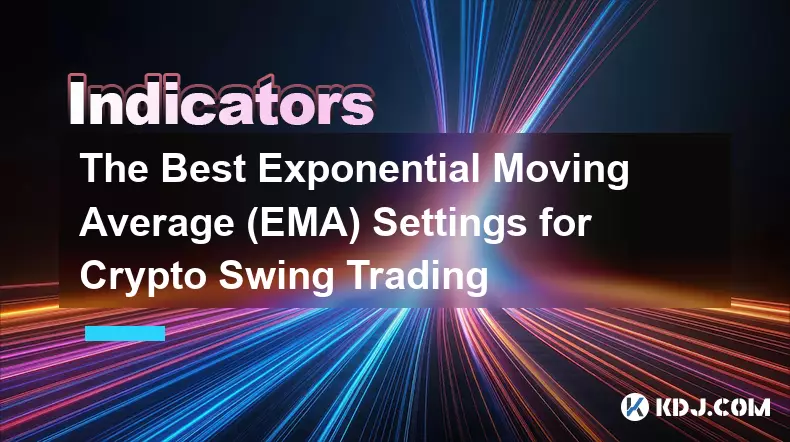
The Best Exponential Moving Average (EMA) Settings for Crypto Swing Trading
Oct 25,2025 at 04:55pm
The Best Exponential Moving Average (EMA) Settings for Crypto Swing TradingSwing trading in the cryptocurrency market relies heavily on identifying tr...
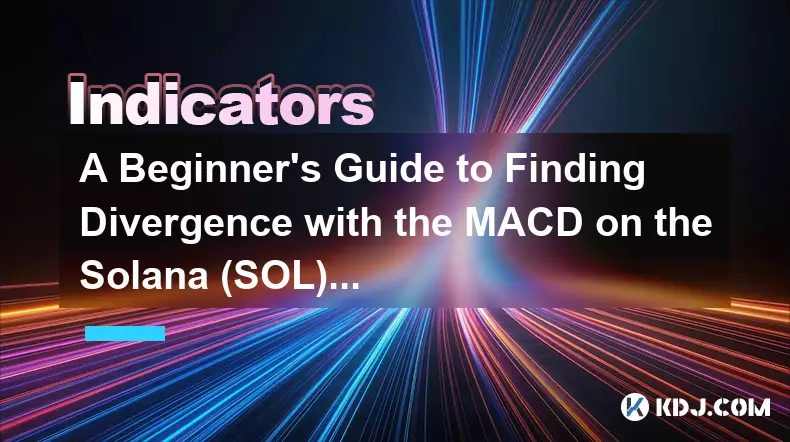
A Beginner's Guide to Finding Divergence with the MACD on the Solana (SOL) Chart
Oct 26,2025 at 12:36pm
Understanding MACD and Its Role in Solana Trading1. The Moving Average Convergence Divergence (MACD) is a momentum indicator widely used in cryptocurr...
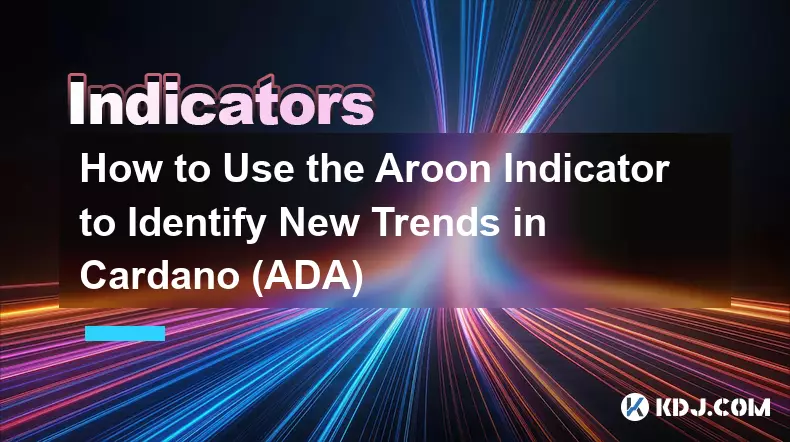
How to Use the Aroon Indicator to Identify New Trends in Cardano (ADA)
Oct 26,2025 at 10:18pm
Understanding the Aroon Indicator in Cryptocurrency Trading1. The Aroon indicator is a technical analysis tool designed to identify whether an asset i...
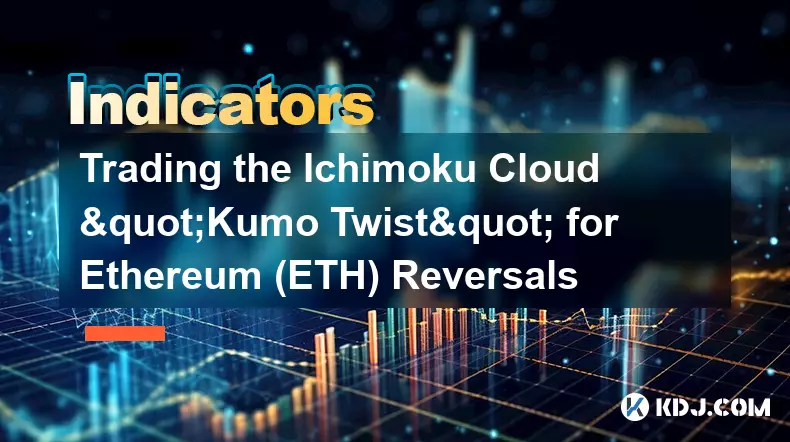
Trading the Ichimoku Cloud "Kumo Twist" for Ethereum (ETH) Reversals
Oct 27,2025 at 01:54am
Understanding the Ichimoku Cloud and Its Components1. The Ichimoku Cloud, also known as Ichimoku Kinko Hyo, is a comprehensive technical analysis tool...
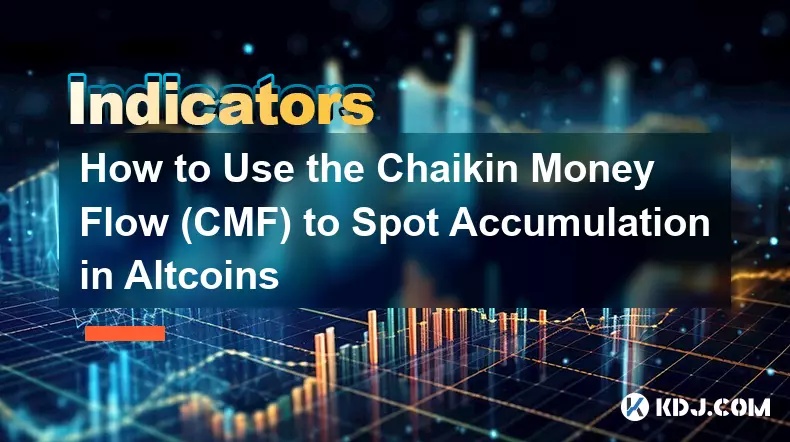
How to Use the Chaikin Money Flow (CMF) to Spot Accumulation in Altcoins
Oct 25,2025 at 08:18pm
Understanding Chaikin Money Flow in the Context of Altcoin Markets1. The Chaikin Money Flow (CMF) is a technical indicator developed by Marc Chaikin t...
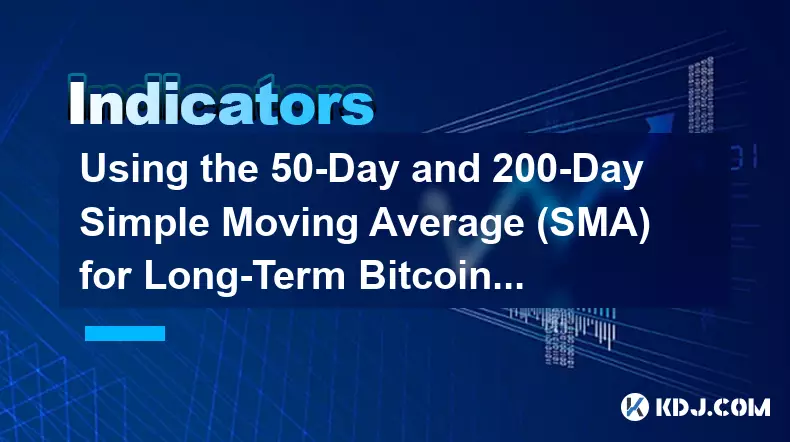
Using the 50-Day and 200-Day Simple Moving Average (SMA) for Long-Term Bitcoin Investing
Oct 27,2025 at 04:19am
Bitcoin's Role in Decentralized Finance1. Bitcoin remains the foundational asset in the decentralized finance ecosystem, serving as a benchmark for va...

The Best Exponential Moving Average (EMA) Settings for Crypto Swing Trading
Oct 25,2025 at 04:55pm
The Best Exponential Moving Average (EMA) Settings for Crypto Swing TradingSwing trading in the cryptocurrency market relies heavily on identifying tr...

A Beginner's Guide to Finding Divergence with the MACD on the Solana (SOL) Chart
Oct 26,2025 at 12:36pm
Understanding MACD and Its Role in Solana Trading1. The Moving Average Convergence Divergence (MACD) is a momentum indicator widely used in cryptocurr...

How to Use the Aroon Indicator to Identify New Trends in Cardano (ADA)
Oct 26,2025 at 10:18pm
Understanding the Aroon Indicator in Cryptocurrency Trading1. The Aroon indicator is a technical analysis tool designed to identify whether an asset i...

Trading the Ichimoku Cloud "Kumo Twist" for Ethereum (ETH) Reversals
Oct 27,2025 at 01:54am
Understanding the Ichimoku Cloud and Its Components1. The Ichimoku Cloud, also known as Ichimoku Kinko Hyo, is a comprehensive technical analysis tool...

How to Use the Chaikin Money Flow (CMF) to Spot Accumulation in Altcoins
Oct 25,2025 at 08:18pm
Understanding Chaikin Money Flow in the Context of Altcoin Markets1. The Chaikin Money Flow (CMF) is a technical indicator developed by Marc Chaikin t...

Using the 50-Day and 200-Day Simple Moving Average (SMA) for Long-Term Bitcoin Investing
Oct 27,2025 at 04:19am
Bitcoin's Role in Decentralized Finance1. Bitcoin remains the foundational asset in the decentralized finance ecosystem, serving as a benchmark for va...
See all articles










































































